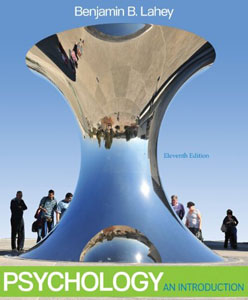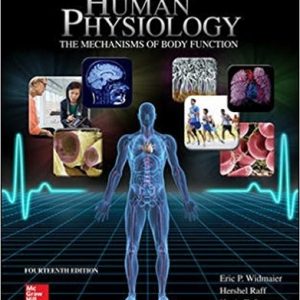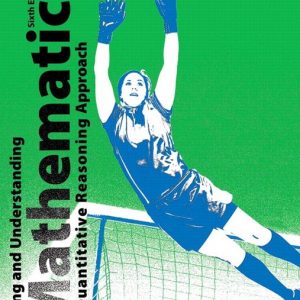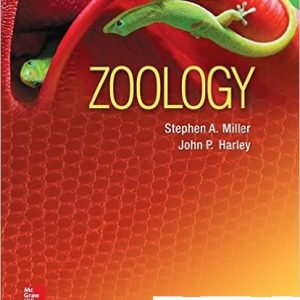Instant download Test Bank For Psychology: An Introduction, 11 edition: Benjamin Lahey pdf docx epub after payment.
ch01
Student: ___________________________________________________________________________
1. When referring to the essence of life, Aristotle used the term ______ translated from the Greek, meaning
mind.
A. ludus
B. psyche
C. venus
D. cheiras
2. The writings of Aristotle are important to psychology’s origins because they were concerned with the
nature of
A. light.
B. life.
C. evolution.
D. energy.
3. Aristotle is important to psychology, because he believed that to achieve full understanding of anything
we must
A. use Plato’s philosophical methods.
B. use introspective techniques.
C. think and observe.
D. disregard outward behavior.
4. The term “psyche” when translated from the Greek is most closely associated with the term
A. habit.
B. life.
C. study.
D. mind.
5. Why is psychology a science?
A. It attempts to separate the elements of the mind.
B. It uses rigorous methods of observation.
C. It has more than one research method.
D. It uses thought to achieve understanding.
6. Which of the following is a key term in the definition of psychology?
A. Behavior
B. Habit
C. Introspection
D. Induction
7. Strictly speaking, overt behaviors are actions that
A. are usually considered illegal.
B. happen when no one else is around.
C. you can directly observe.
D. you can infer from careful observation.
8. What does psychology have in common with all other sciences?
A. It is based on Plato’s methods.
B. It offers proof of theoretical truths.
C. It uses rigorous methods of observation.
D. It directly measures thought processes.
9. Which goal of psychology are clinical psychologists attempting when giving recommendations to parole
boards about which prisoners to release early?
A. Prediction
B. Description
C. Influencing
D. Understanding
10. Behaviors refer to actions that are _____, and mental processes refer to events that are _____.
A. public; private
B. legal; illegal
C. private; public
D. illegal; legal
11. Industrial psychologists who design tests to screen new job candidates for various companies in order to
hire workers who should perform best are attempting which goal?
A. Prediction
B. Description
C. Influencing
D. Understanding
12. Workers are surveyed about their years of experience and level of job satisfaction. The goal of
psychology best illustrated by this survey is
A. description.
B. prediction.
C. understanding.
D. influencing.
13. In psychology, the words describe, predict, understand, and influence relate to
A. descriptive methods.
B. correlational methods.
C. areas of psychology.
D. the goals of psychology.
14. Which of the following is a goal of psychology?
A. Translate
B. Manipulate
C. Interpolate
D. Understand
15. Which of the following best describes truth and theory?
A. It takes at least three consistent truths to comprise a theory.
B. Theories that are upheld for at least 20 years are considered truths.
C. Truths are tentative conclusions at best.
D. Theories are not absolute and may be revised over time.
16. A psychologist is developing a theoretical explanation about a behavior. To which goal of psychology are
theoretical explanations important?
A. Control
B. Prediction
C. Understanding
D. Description
17. To say that a theory is tentative means that it
A. has the support of animal research but not human research.
B. has been proven in study after study.
C. is what we believe right now, but it could change.
D. has the support of human research but not animal research.
18. Which of the following is an example of a psychologist’s attempt to predict behavior?
A. Conducting an experiment to test a theory about teenage sexual behavior
B. Determining whether a job applicant is likely to perform well on the job
C. Implementing a curriculum shown to reduce high school dropout rates
D. Surveying college students about their drinking habits
19. Which of the following is an example of a psychologist’s attempt to understand behavior?
A. Conducting an experiment to test a theory about teenage sexual behavior
B. Determining whether a job applicant is likely to perform well on the job
C. Implementing a curriculum shown to reduce high school dropout rates
D. Surveying college students about their drinking habits
20. A(n) ______ is a tentative explanation of the facts, findings, and relationship in any of the sciences.
A. edict
B. theory
C. law
D. declaration
21. In which time period did psychology became a recognized field of study?
A. When introduced by Aristotle about 2,000 years ago
B. When introduced in Greece around the year 384 BC.
C. When the first laboratory was established in the late 1800s
D. Soon after sciences emerged from philosophy
22. The beginning of psychology as a science began in the discipline of
A. philosophy.
B. physics.
C. chemistry.
D. biology.
23. The launching of psychology as a separate field is usually credited to have occurred during the
A. 1500s.
B. 1800s.
C. 1900s.
D. 1700s.
24. Which question were structuralists primarily interested in investigating?
A. What are the purposes of mental activity?
B. What influences people to do the things they do?
C. What are the individual components of the mind?
D. What is the basis of forgetting?
25. What was the goal of introspection?
A. To predict which individuals would develop either normal or abnormal personality traits
B. To understand the interplay between the components of the id, ego, and superego
C. To observe the contents of the mind as accurately and unemotionally as possible
D. To determine the fundamental differences between classical conditioning and operant conditioning
26. If you were a psychologist who was labeled a structuralist, you would be interested in the _______ of the
mind, using ______ as you primary research method.
A. function; experimentation
B. structure; experimentation
C. function; introspection
D. structure; introspection
27. With which school of psychology are Wilhelm Wundt and his student, Edward Titchener, associated?
A. Functionalism
B. Structuralism
C. Introspection
D. Behaviorism
28. In which school of thought did researchers ask participants to report sensations they were experiencing?
A. Behaviorism
B. Functionalism
C. Structuralism
D. Cognitive
29. J. Henry Alston was notable as an African-American psychologist and for his studies of the sensations of
heat and cold. J. Henry Alston was an early
A. humanist.
B. behaviorist.
C. structuralist.
D. functionalist.
30. Which school of psychology focused its studies on perception?
A. Structuralism
B. Functionalism
C. Psychoanalysis
D. Gestalt psychology
31. Which structuralist is best known for the study of heat and cold?
A. J. Henry Alston
B. Wilhelm Wundt
C. Edward Titchener
D. Raymond Cattell
32. Which school of psychology used the phi phenomenon to demonstrate its belief about human
consciousness?
A. Gestalt psychology
B. Cognitive psychology
C. Functionalism
D. Psychoanalysis
33. Which approach to psychology would be apt to say “the whole is greater than the sum of its parts”?
A. Structuralist
B. Gestalt
C. Functionalist
D. Behaviorist
34. The phi phenomenon was used by psychologists to argue that
A. the rate of decay of items from short-term memory is unrelated to encoding strategy.
B. basic elements of human consciousness can be discovered through the process of introspection.
C. perception has meaning only when it is seen as a whole, rather than as a collection of elements.
D. isolating the elements of experience can give a true understanding of behavior.
35. The ______ psychologists preferred to study behavior as a collection of elements, while the ______
psychologists preferred to study behavior as a whole, in its entire context.
A. behaviorist; Gestalt
B. structural; functional
C. Gestalt; structural
D. functional; behaviorist
36. In psychology, William James was highly influential in developing the school of thought known as
A. psychoanalysis.
B. Gestalt psychology.
C. structuralism.
D. functionalism.
37. If an early psychologist believed that the study of psychology should focus on the purpose of the mind
and not on its raw elements, that psychologist would most likely adhere to the school of thought known
as
A. behaviorism.
B. psychoanalysis.
C. functionalism.
D. structuralism.
38. If you are interested in the functionalist approach to psychology, you would be most interested in
A. how early childhood experiences helped to shape adult behavior.
B. the contingencies and relationships between stimuli and responses.
C. the parts of human consciousness and how they are organized.
D. how human consciousness works to help us exist and survive.
39. Using William James’ analogy, the study of a flowing stream is like ______ as the study of individual
water molecules is like _____.
A. functionalism; structuralism
B. structuralism; behaviorism
C. behaviorism; Gestalt psychology
D. Gestalt psychology; functionalism
40. What was the main contribution of Hermann Ebbinghaus to psychology?
A. He demonstrated that mental elements were more important than the concept of Gestalt.
B. He established the first scientific laboratory for the study of conscious processes.
C. He emphasized that the whole is greater than the sum of its parts.
D. He demonstrated that carefully controlled experimentation can be conducted.
41. Who was the early pioneer in memory research that used himself as his only research subject?
A. Max Wertheimer
B. Sigmund Freud
C. Alfred Binet
D. Hermann Ebbinghaus
42. You have learned a list of 20 nonsense syllables. You are tested at 20 minutes, 1 hour, 10 hours, and 24
hours. If you fit Hermann Ebbinghaus’ forgetting curve you will
A. remember approximately the same number of syllables at 10 hours and 24 hours.
B. have perfect recall only when tested at 20 minutes and 1 hour.
C. forget the largest number of syllables between 1 hour and 10 hours.
D. not remember any of the syllables after 24 hours.
43. Who participated in Hermann Ebbinghaus’ studies of memory?
A. College students
B. Only himself
C. Faculty members
D. Community leaders
44. Why did Hermann Ebbinghaus make up nonsense syllables for his memory studies?
A. By using nonsense syllables comprised of the initials of his friends, he thought his memory
performance would be improved.
B. He really didn’t have a specific reason for using nonsense syllables, but he thought it was a good idea.
C. Because if he used real words, his prior experience with those words might influence his memory.
D. Because he did not have copyright permission to use words in actual use, so he had to make up his own
nonwords.
People also search:
Psychology: An Introduction
Psychology: An Introduction Benjamin Lahey
Psychology: An Introduction Benjamin Lahey 11
Psychology: An Introduction Benjamin Lahey 11 Test Bank
Test Bank For Psychology: An Introduction, 11 edition: Benjamin Lahey Download






